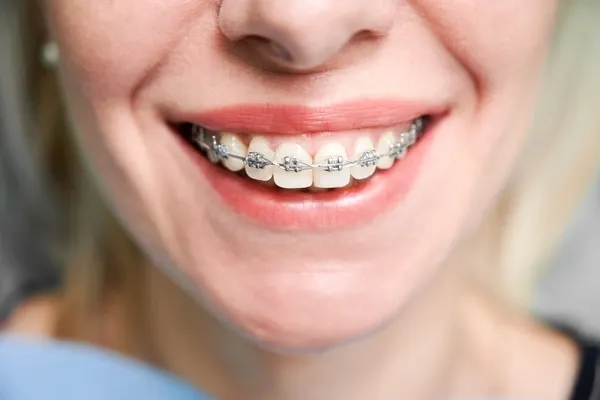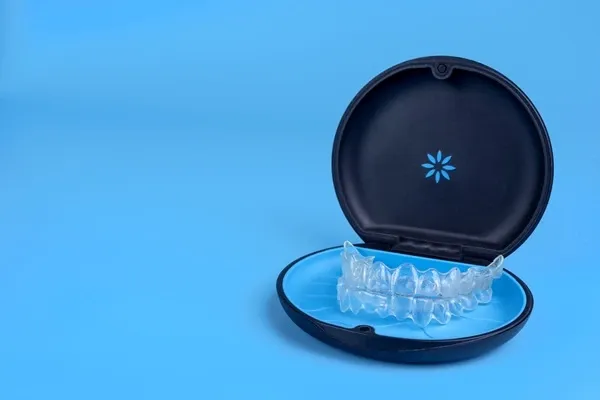Life with Braces vs. Invisalign: What to Expect Day-to-Day
Transforming your smile is an exciting journey, but the path you choose—whether braces or Invisalign—can shape your day-to-day experience in unique ways. Both options are effective for straightening teeth and addressing orthodontic issues, but they come with different lifestyles, challenges, and conveniences.
Daily Comfort and Fit
Braces
- Initial Adjustment: It takes a few days to get used to the feeling of brackets and wires.
- Irritation: Metal components may cause discomfort to cheeks and tongue.
- Soreness: Common after orthodontist adjustments due to pressure on teeth.
- Fixed Appliance: Always in place, so there is no need to think about wearing or removing them.

Invisalign
- Smooth Design: Clear aligners are made of smooth plastic, reducing irritation.
- Pressure Sensation: Mild pressure is felt when switching to a new set of aligners, signaling progress.
- Removability: This can be taken out for meals, offering more flexibility in daily activities.
- Commitment Needed: Must be worn 20–22 hours a day to ensure effectiveness.
Key Differences
Braces are fixed and can be more noticeable, while Invisalign offers a more discreet and flexible option.
Braces may cause occasional irritation, whereas Invisalign’s smooth design is gentler on the mouth.
Both involve some level of discomfort during tooth movement, but the experience varies by design.
Eating and Drinking with Braces and Invisalign
Braces
Food Restrictions:
Avoid sticky, hard, or chewy foods like gum, caramel, and nuts to prevent damage.
Foods like apples, corn on the cob, and hard candies may cause brackets to break.
Eating Process:
Need to cut up harder foods into smaller pieces to avoid damaging the braces.
Brushing and flossing after every meal is essential to remove food particles stuck in the braces.
Drinks:
Avoid sugary drinks like soda to prevent plaque buildup and tooth decay.
Hot drinks like coffee or tea can sometimes loosen the brackets.
Invisalign
No Food Restrictions:
Since aligners are removable, you can eat anything you like, but you should remove the aligners before eating.
Eating Process:
- Simply remove the aligners before eating and drinking anything, ensuring the aligners are put back in afterward.
- Clean your teeth before reinserting the aligners to prevent food particles from getting trapped inside.
Drinks:
- Avoid drinking sugary or acidic beverages with aligners to prevent staining or decay.
- Water is the best option when wearing aligners.
Key difference
Braces come with strict food restrictions to protect the appliance, while Invisalign allows you to eat freely by removing the aligners.
Both options require attention to oral hygiene, but with Invisalign, you’ll need to clean your teeth before reinserting the aligners after meals.
Oral Hygiene: Cleaning and Maintenance
Braces
Brushing:
- Brush after every meal to remove food particles from brackets and wires.
- Use a soft-bristled toothbrush and special tools like an orthodontic toothbrush or interdental brushes for hard-to-reach areas.
Flossing:
Flossing with braces can be tricky; use floss threaders or a water flosser to clean between teeth and under the wires.
Cleaning Tools:
Consider using a mouthwash to help remove plaque and reach areas brushing might miss.
Regular Checkups:
Frequent dental visits are essential to ensure the braces and teeth are in good condition and to prevent plaque buildup.
Invisalign
Brushing:
- Brush your teeth after every meal to remove food particles before reinserting the aligners.
- Clean your aligners daily using a soft toothbrush and clear, lukewarm water to avoid the buildup of plaque and bacteria.
Flossing:
Continue your regular flossing routine, as the aligners don’t interfere with this.
Cleaning Aligners:
Use Invisalign cleaning crystals or gentle soap to clean aligners and avoid harsh chemicals that could damage them.
Storage:
When not in use, store aligners in their case to keep them clean and prevent loss or damage.
Key Differences
Braces require more time and effort for daily cleaning due to the fixed nature of the appliance and harder-to-reach areas.
Invisalign offers easier maintenance with fewer cleaning tools, but it requires consistent care of both your teeth and aligners.
Both options require regular attention to oral hygiene, but Invisalign tends to be more flexible when it comes to daily care routines.
Adjustments and Appointments
Braces
Frequency of Appointments:
Typically, visits to the orthodontist every 4–6 weeks for adjustments.
Adjustments:
The orthodontist will tighten or replace the wires and adjust the brackets to ensure proper teeth movement. This can cause temporary discomfort or soreness for a few days after each visit.
Additional Visits:
Some visits may include replacing broken brackets or checking for any issues with the appliance.
Treatment Time:
Braces usually require a longer treatment period (18 months to 3 years), depending on the complexity of the case.
Invisalign
Frequency of Appointments:
Visits are generally less frequent, about every 6–8 weeks, to monitor progress and ensure the aligners are fitting properly.
Adjustments:
Rather than physical adjustments, you’ll receive new aligners every 1–2 weeks, which gradually shift your teeth.
No Tightening:
There are no wires or brackets to tighten, so discomfort is minimal compared to braces.
Treatment Time:
Invisalign treatment is typically shorter (12–18 months), but this can vary depending on the individual.
Key Differences
- Braces require more frequent orthodontic visits for physical adjustments, while Invisalign involves periodic checkups and new aligner sets.
- Invisalign appointments tend to be quicker and less frequent, with less discomfort than the traditional adjustments needed with braces.
- Treatment duration may vary; Invisalign often offers a shorter treatment time, depending on the complexity of the case.

Choosing What’s Right for You: Factors to Consider
Appearance:
If discretion is important to you, Invisalign is the better option as it’s clear and less noticeable compared to the metal brackets and wires of traditional braces.
Lifestyle and Diet:
If you prefer a flexible diet without food restrictions, Invisalign is the ideal choice, as it allows you to remove the aligners before eating. Braces, however, require more careful food choices to avoid damaging the appliance.
Comfort and Convenience:
Invisalign is often more comfortable with fewer mouth irritations and easier to clean since it’s removable. Braces may cause discomfort and require extra cleaning tools to maintain oral hygiene.
Treatment Time:
Invisalign can often provide faster results for mild to moderate cases and generally requires a shorter treatment time. Braces, on the other hand, may be necessary for more complex orthodontic issues and may take longer to complete.
Cost:
Braces tend to be more affordable in many cases, but the cost can vary depending on the treatment plan and your location. Invisalign may be slightly more expensive, but it provides a more discreet and flexible treatment experience.
Your Personal Goals
- Aesthetic Preferences: If looking natural is a priority, Invisalign might be the better fit.
- Treatment Duration: If you’re looking for quicker treatment time and easier day-to-day care, Invisalign may be the ideal choice.
- Budget: Consider your budget and weigh the cost difference between the two options.
- Orthodontic Needs: If you have severe misalignment or need complex adjustments, traditional braces might be more effective for your specific case.
Consultation with an Orthodontist
The best way to decide is to consult with an orthodontist. They can assess your teeth, and alignment needs and recommend the most suitable option for your specific situation.
Conclusion
Both braces and Invisalign are effective orthodontic solutions, but the right choice depends on your preferences, lifestyle, and dental needs. Whether you choose the traditional approach of braces or the flexibility of Invisalign, both options will help you achieve the smile you desire.
Contact your Pinole dentist, Dr. Hoss Abar, DDS, MSD at Abar Orthodontics, to learn more about Life with Braces vs. Invisalign: What to Expect Day-to-Day.
Resource:
Orthodontic Preparation for Surgery
*This media/content or any other on this website does not prescribe, recommend, or prevent any treatment or procedure. Therefore, we highly suggest that you get the advice of a qualified dentist or other medical practitioners regarding your specific dental condition.*
More To Explore
About Us
We believe that every patient deserves to feel confident about their smile. Years of experience creating beautiful and flawless smiles.
Opening Hours:
Monday - Thursday: 8:00 AM - 5:00 PM
Friday: 8:00 AM - 12:00 PM
Saturday - Sunday: Closed
Abar Orthodontics, Pinole, CA
1500 Tara Hills Drive., Suite 204
Pinole, CA 94564
Abar Orthodontics, San Leandro, CA
145 East 14th street., #100
San Leandro, CA 94577
© 2025Abar Orthodontics | All rights reserved | Powered by:Vigorant, Inc.
